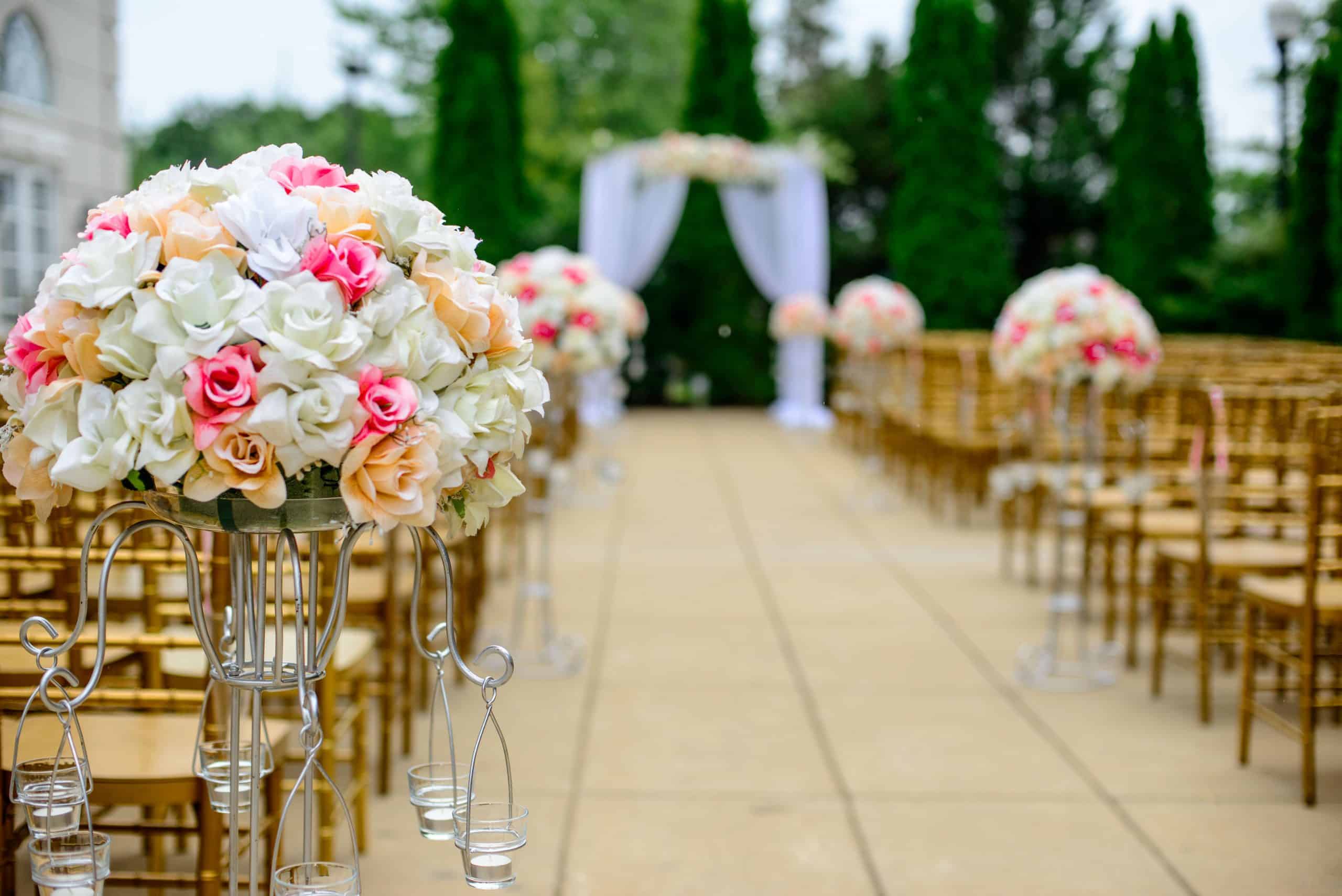If you have chosen the do-it-yourself wedding flowers route, you will need to know how to utilize the equipment that will keep your stems in the right place. One mechanism to help you with this is the pin-holder.
Sometimes also called frogs, pin-holders come in many shapes and sizes. If you are a beginner, you’ll only need to use one. More experienced and advanced arrangers sometimes need several. The most useful size is probably the 2.5 in (6.25 cm) in diameter., but a 2 in (5 cm) or 3 in (7.5 cm) work well too.
A good pin-holder should have,
- brass pins rather than steel (brass pins are yellow, steel, or grey – steel pins rust, brass pins do not)
- a lead base (it should feel heavy in your hand)
- pins that are close together and firmly embedded in the lead.
Usually, stems are inserted directly into or onto the pin-holder. Sometimes, however, florists will use a combination of floral foam and a pin-holder. They do this to secure the floral foam in an awkward space where tape can’t be used. You don’t want to put floral foam directly onto a pin-holder. It is really hard to remove all the little bits of foam when you are finished with it. One way around that is to put a piece of some nylon tights onto the pins and work it down to the bottom of the pins before putting on the foam. That way, after you remove the foam, you can lift the piece of nylon and remove all the little bits of foam left behind.
Flowers or foliage with hard stems should have their stems cut at a sharp angle before you ease them either between or onto the pins. You can then angle them using gentle pressure. Be careful when you do this because the pins are very sharp. If for some reason you have some very hard and woody stems that just won’t stay in place (this can happen to the most experienced floral designers), slit the stem upwards. This will help them go on the pins more easily without damaging your pin-holder.
Thin stems can also present a challenge when you use a pin-holder.
- You can tie 4-5 thinner stems to the outside of a thick, hard stem, with the thinner stems sticking past the main hard stem end. Use string to tie the stems together because it will shrink in water and therefore will hold better.
- You can also tie several thin stems together with wool and then this will easily slip onto a pin.
- Another method would be to put thin stems inside a piece of a thicker, hollow stem and then slip that onto the pins.
You can place your pin-holder on the bottom of either a vase or bowl. Secure it with a blob of florist’s adhesive clay.
To hide your pin-holder once the arrangement is finished, you can add flat pebbles, marbles, or even moss around it.
When you are finished with the arrangement, you need to wash your pin-holder. By the time the arrangement has no life left in it, your pin-holder will have a fine collection of bacteria that will need to be cleaned with warm water and bleach. After you’ve done that, rinse it with warm water and let it air-dry before putting it away in a cupboard.
Using a pin-holder for do-it-yourself wedding flowers is a very effective way of holding your stems in place. You just need to use a few tricks of the trade to make it all go smoothly.




